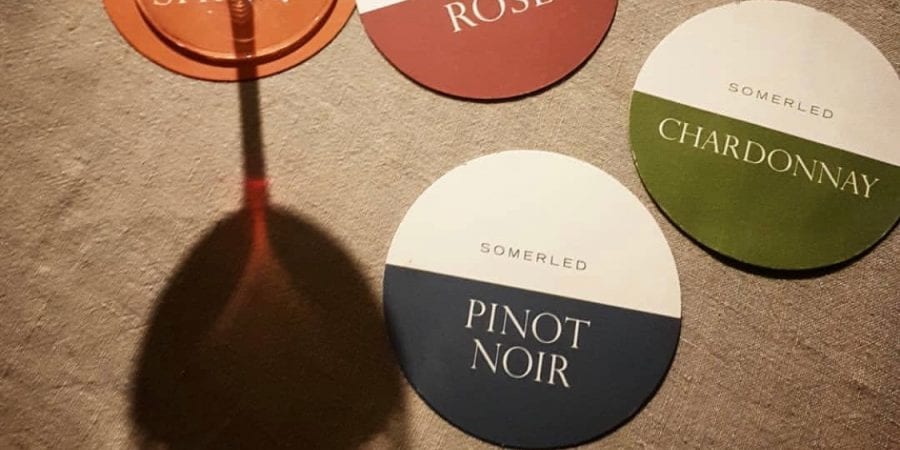As promised last week, we’re going to talk about food and wine pairing in today’s blog.
Unfortunately due to the fact that I have a brain like a sieve, it has only just dawned on me that I’ve already tackled this topic. Back in June 2018 (have I really been doing this for that long??!!).
However… given that post was almost two years ago now, I don’t think it hurts to revisit the topic! Especially for the new-comers (are there any old-comers still left?!) to this blog.
We’re all doing a bit more “fine dining” at home these days. We’re either supporting local businesses with takeaway orders or putting our culinary skills to the test in the kitchen. And what’s great about that is that we have access to our own personal wine collection without the corkage!
Win-win!
But how do you make sure you make the right choice…?
The basics
If (like me) you are a complete novice at matching wine and food then these rules will come in handy…
- The wine should be more acidic than the food.
- The wine should be sweeter than the food.
- The wine should have the same flavor intensity as the food.
- Red wines pair best with bold-flavored meats (e.g. red meat).
- White wines pair best with light-intensity meats (e.g. fish or chicken).
- Bitter wines (e.g. red wines) are best balanced with fat.
- It is better to match the wine with the sauce than with the meat.
- More often than not, White, Sparkling and Rosé wines create contrasting pairings.
- More often than not, Red wines will create congruent pairings.
Of course, there are always exceptions to the rules. As you get more confident you’ll definitely be able to play around with pairings that go against the basic logic.
Let’s break a couple of those concepts down a little to understand how they work…
Acid
If the wine isn’t more acidic than the food, then the wine is going to taste flat. A good example to help visualise this is a glass of oaked chardonnay with a vinaigrette salad.
High acid wine will also add a range of interesting flavours to a fat heavy dish. There is nothing like a glass of sparkling to cut the fat… like some delicious triple cream brie perhaps?
Wines with high acidity include many whites, rosé and sparkling.
Sweet
Sweet loves salty. Think about our salty manchego cheese paired with the sweet sun-dried figlets on our Spanish platter!
And when I say sweet, I don’t necessarily just mean sweet dessert wines (although Tawny Port and pretzels are an amazing combo!). Just think about the fruit sweetness of the wine you are choosing with your savoury meal.
Bitter
Generally speaking, red wines have more bitterness than other wines.
And by bitter, I mean tannins. Tannic wines (like a nice big red) should be balanced with fat. Here, you need to imagine a nice big juicy steak and a glass of Somerled Shiraz.
Contrasting and congruent pairings
- A contrasting pairing creates balance by contrasting tastes and flavors. Imagine the way coconut goes so well with lime.
- A congruent pairing creates balance by amplifying shared flavor compounds. Just like the way beef and mushroom go so well together.
In real life…
 Unfortunately, I didn’t have any takers when I asked for you to share your recent food and wine pairing wins. It’s ok… I won’t take it personally…
Unfortunately, I didn’t have any takers when I asked for you to share your recent food and wine pairing wins. It’s ok… I won’t take it personally…
But in the interest of putting all this newfound info into practice allow me to share one of my Friday night success stories.
The family and I have been sharing the love between local favourites Comida and Hahn & Hamlin for our lockdown sustenance.

On the night we sat down to a delicious meal of…
- Leek and smoked cheese croquetas served with creamy aioli
- Slow-cooked lamb ribs with sweet sherry glaze with caper salad
- Chicken and chorizo paella
…we paired it with an absolutely gorgeous 2015 Somerled Tempranillo. Yum!
 And it was (mostly) perfect for the following reasons…
And it was (mostly) perfect for the following reasons…
- The fruit sweetness in the Tempranillo is to die for. It paired so beautifully with the savoury flavours in the meal. With the exception perhaps of the ribs, given the sweetness of the glaze – but fortunately that wasn’t super sweet and didn’t overpower the flavour of the lamb.
- The wine was definitely the same flavor intensity as the food.
- Lovely tannins in the tempranillo are balanced beautifully with the fat in the cheesy croquetas and lamb ribs.
- And the good old… red wine pairs best with red meats. Now I know you’re saying, “But what about the chicken in the paella?”. Good question, but all the smokey flavours from the chorizo and other spices take over in a paella. So a medium-bodied red wine is a perfect match.
Mmmmm… so good!
If this discussion has just reminded you that we don’t currently have any tempranillo on our shelves… don’t fret!
In just under a month our next tempranillo (2019) will be heading down the bottling line. That means we’ve got the 2018 and 2019 in the pipeline. And don’t forget that 2020 Tempranillo/Graciano blend as well! Not too much longer to wait. I promise!
